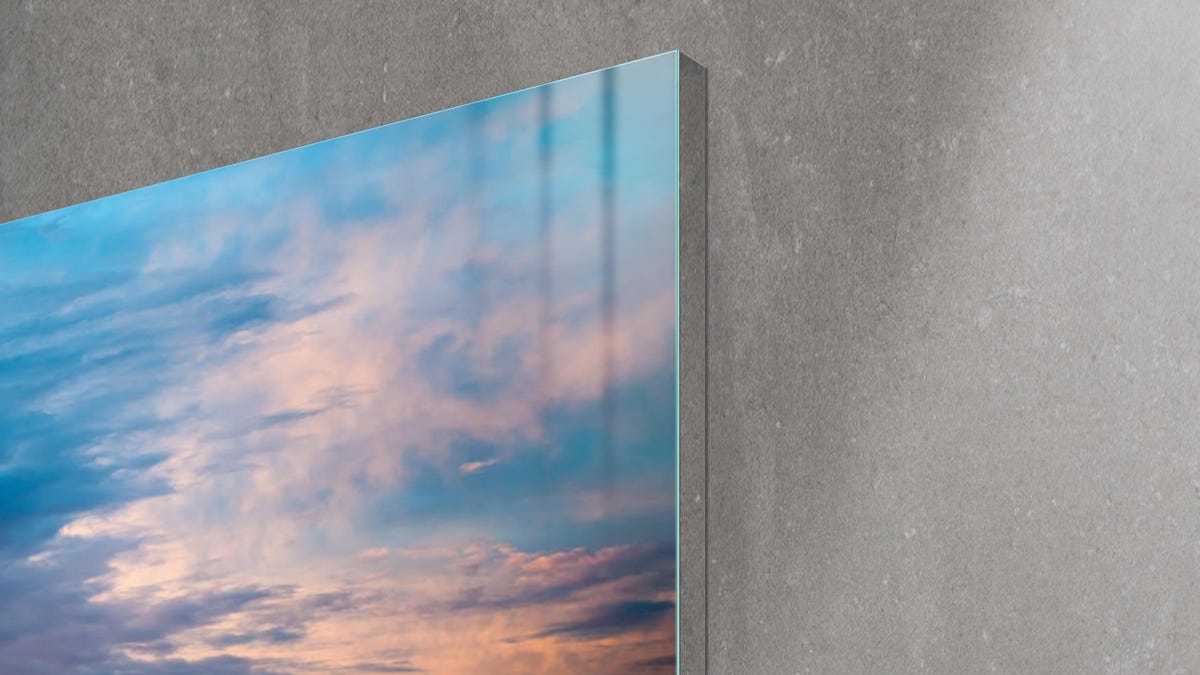Samsung's The Wall makes massive, 146-inch modular TV a reality
Using a modular display technology Samsung calls MicroLED, The Wall is truly gigantic, and shipping this year. We took it all in at CES 2018.

"Micro"LED is kind of a misleading name, because this new TV technology from Samsung can create truly gigantic screens. The name of the TV itself, however, is entirely appropriate: The Wall.
MicroLED is based on Samsung's Cinema Screen technology, designed for movie theaters. The Wall is the house-size version, a mere 146 inches diagonal. That's a TV over 10 feet wide and almost 6 feet tall. And it could get even bigger.
Samsung introduces a 146-inch modular, MicroLED based TV it calls The Wall. Now we're left to guess what's Beyond The Wall. pic.twitter.com/SrwFFPjNke
— David Katzmaier (@dkatzmaier) January 8, 2018
That's because it's modular. According to Samsung: "Users can add or remove modules to make their TV bigger or smaller, in any configuration, removing previous limitations on screen size, with zero impact on performance of the display."
Unlike traditional LED-based LCD TVs , which use a liquid crystal layer and an LED backlight, MicroLED uses an array of millions of individual, tiny LEDs to create the image. It's very similar to the technology used in scoreboards and jumbo screens, but scaled for home use. A big, expensive home. Samsung says the 146-inch size was chosen to comply with the standard ceiling height.
Because each LED can turn on or off individually, MicroLED has the potential for infinite contrast, just like OLED TVs. The Wall can achieve a searing 2,000-nit brightness, higher than any LED LCD we've tested, and the combination should produce breathtaking pop, especially for HDR sources. While the set can achieve DVI-P3 color, Samsung has yet to confirm a resolution for the 146-inch TV. I'll be very surprised if it isn't 4K.
Is MicroLED an OLED killer? Not so fast.
Organic light-emitting diode TVs made by LG are the current image quality kings, so you might be wondering if MicroLED, the first entirely new display tech to be commercialized since OLED in 2013, has a chance to take it out.
I wouldn't bet on it, at least in the next few years.
In terms of image quality, from my few minutes looking at Samsung's demo footage on the wall, it has the potential to match OLED. Black levels looked perfectly black, and combines with the searing light output delivered superb pop and contrast. From any normal seating distance (well, I was standing, but whatever), the image was perfectly sharp, and I couldn't really see any "seams" of the individual modules. So yes, it looks as good or better than OLED, which can't get as bright, based on my limited time viewing it. I'll have to get more time with real-world material, however, to say for sure.
On the bottom is a MicroLED panel, and the top a tablet showing a mangnified section that reveals the LEDs.
The issue isn't image quality, it's whether a MicroLED set can be manufactured in a size and quantity to actually compete against OLED in the mainstream market.
In a conversation with Samsung representatives, the first hurdle they cited is manufacturing yield. Each individual red, green and blue LED subpixel -- which measure about 1mm square with 1mm distance between them (what they call "pitch") -- had to be placed precisely in the manufacturing process, and it's not easy. Samsung has expertise in semiconductors as well as displays, so it's well positioned to tackle the issue, they say, but even so it's a challenge.
The next step, says Samsung, is to produce a 75-inch size at 4K resolution. That's roughly half the size of the current 146-inch iteration, and will require both smaller LEDs and, more difficult, even narrower pitch between them. I asked how long it might take before a 75-inch MicroLED TV hit the market, and a representative said somewhere between two and five years.
While 75-inch TVs are becoming increasingly common, they're hardly mainstream. The vast majority of OLED sets sold are either 55 or 65 inches and Samsung didn't speculate on when we'd see even smaller MicroLED sets. I also asked whether they might decide to make the technology in a lower-than-4K resolution, which would allow smaller screen sizes, but was told that wasn't on the radar.
Beyond saying it would ship this year, no pricing or availability was announced. Of course I asked, but Samsung's reps wouldn't give any hints on pricing. If I had to guess, I'd say The Wall will cost $100,000.
The Wall, MicroLED TV. #CES2018 #SamsungxCES2018 @CNET_Es pic.twitter.com/ahpbuBon4v
— Juan Garzon (@onegarzon) January 8, 2018
What to expect from the big screens of 2018: From OLED to QLED to Micro LED, CES is the place where screen time is absolutely friggin' huge. Here's a peek.
CES 2018: CNET's complete coverage of tech's biggest show.

